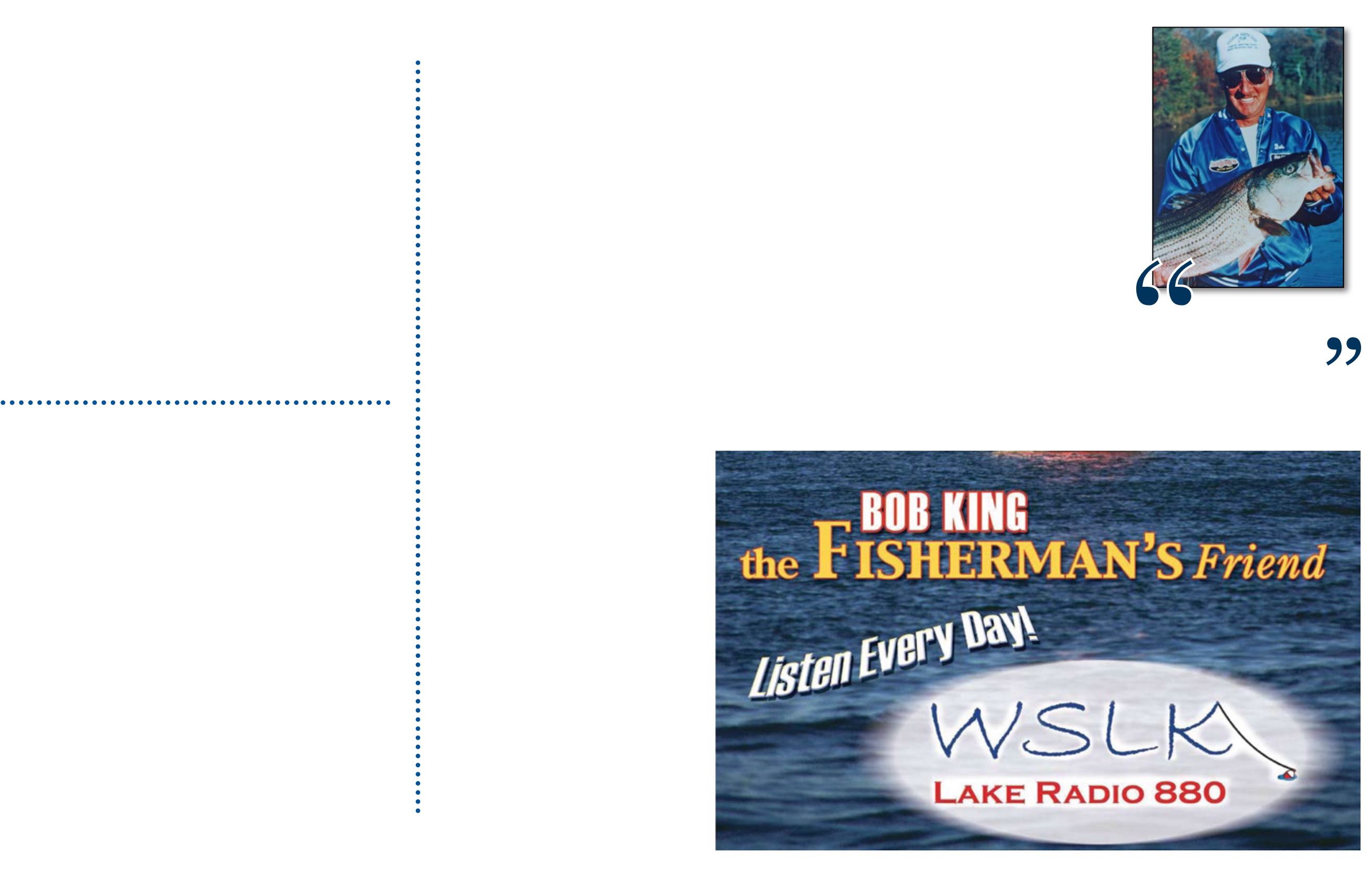
Discover Smith Mountain Lake
FALL 2016
23
22
When I was president of the Striper
Club, we worked with the state of
Virginia, posting notices asking anglers
to catch their limit and then quit fishing.
We asked them not to catch and release
large Striped Bass (fish over 20”) in
the warm water months, so as to help
protect the resource. Some lakes in
the mid Atlantic area have “barred”
some anglers from their lake in order
to prevent “catch & release” of Striped
Bass in warm water months.(Fish can
drown if here is not enough oxygen in
the water.
Regardless of what you call this fish, I
would hope that you would respect and
help protect it as a resource. In order
for a Striped Bass to become a “ trophy”
fish, it must live for a good while. If an
angler does “catch & release” on this
fish and it dies, it can not get to be a
BIG fish. Striped Bass can live as long
as 30 years; they have been known to
grow to as much as 6 feet in length, and
weigh up to 125 pounds. The oldest
recorded Striped Bass was 31 years
old; the largest recorded Striped Bass
was 125 pounds, caught on the North
Carolina coast in 1891.
Striped Bass are often seen as the
greatest success story of the Chesapeake
Bay. Not only is the Striper a great fish
for eating, it is also a great sport fish.
It is very elusive, and a very strong
fighter. Populations of the this iconic
sport fish plummeted in the 1970s
and early 1980s , but then rebounded
because of tightened catch restrictions
in a dozen states from 1985 to 1990,
including a moratorium on catching
them in Maryland, Virginia and other
states.The fish population was at a peak
in 2004 and since has been in a slight
decline. In 2015, the Atlantic states
lowered the creel limit, and continue
to warn against releasing adult fish in
warm water months.
Good Luck &
Take a kid fishin’!
BOB KING
Questions? Send me an e-mail!
Usually on or about September 1st, the Striped Bass begin to move to the
center of the channel in the lake, where the deeper water and warmer water
is.This makes it a very good time to troll for these giants… Pulling jigs and
spoons seems to work best. Run long lines, very slowly. Lead core line allows
you to troll at a depth that is easy to measure by paying attention to the color
of the line.Watch for fish on graph and troll just over the fish; pull the lines
up when trees appear on screen.
Beginning about November 1st , the water temperature should reach 50
degrees, and the fish will be in the coves where you’ll catch them on top
water minnows (Redfins, Long As, Rebels, etc----about 6 or 7 inch lures).
Remember to retrieve your casts very slowly on the surface before the sun
comes up. After the sun comes up, the fish will return to the channels, and
trolling or jigging will be the rule.
Pay attention to the moon phases for daytime fishing ...7 days before to 7
days after a full moon , skip the first 3 hours of the day and fish the next 3
hours, repeating the cycle. From 7 day before to 7 days after a new moon,
fish the first 3 hours of the day and skip the next 3 (go to lunch or breakfast)
and again, repeat the cycle.
Striped Bass feed on Shad, alewives and
invertebrates, including worms, squid,
menhaden, anchovies, eels, and crustaceans.
The Striped Bass is Maryland’s State Fish.
The Chesapeake Bay is the largest Striped
Bass nursery on the Atlantic coast. Seventy
to 90 percent of the Atlantic Striped Bass
population uses the Bay to spawn. The largest
recorded Striped Bass was caught in 1995
off Bloody Point, just south of Kent Island,
Maryland. It weighed 67.5 pounds.
Striped Bass have been hybridized withWhite
Bass to produce a hybrid Striped Bass, also
known as Wiper, Whiterock Bass, Sunshine
Bass, and Cherokee Bass. These hybrids have
been stocked in many freshwater areas across
the U.S. The hybrid does not get as big as a
Striped Bass, but it will have a lot of girth and
a wider larger tail, which makes this fish a very
strong swimmer, and thus a very good fight for
the angler.


